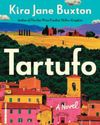
When I was a wee lad and just getting started on my writing journey, I was enamored with the twist ending.¹ Every single story I cranked out as a kid ended with a sort of "Monkey's Paw" twist I imagined would really knock people for a loop and establish me as one of the greatest provocateurs of modern writing, right up there with O. Henry and Rod Serling.²
Blame it on those afternoon "Twilight Zone" marathons that used to run on local TV. I eventually grew out of the need to make every story a celebration of crazy plot twists-though I still love a good twist, especially if I'm the one who thought of it.³ One reason I grew tired of the trick was how often it failed.4
TWISTS ARE TRICKY
Twists fail a lot because they are delicate things. A good twist requires that you surprise your reader, but also that you don't cheat your reader-you have to give them enough information to make the twist feel like something they missed and not brand-new information they couldn't possibly have figured out on their own.
And even if you work hard to play fair, you're sometimes tripped up by your own blind spots. This can happen to any writer, no matter their track record or career stage. Consider the classic film The Shawshank Redemption, written by Frank Darabont (based on Stephen King's novella Rita Hayworth and the Shawshank Redemption). The twist (spoilers!) in the story comes when it's revealed that a falsely convicted prisoner named Andy Dufresne has escaped via a tunnel hidden behind a poster on the wall of his cell-a tunnel he's spent more than 20 years digging using a tiny rock hammer.5
This story is from the September - October 2023 edition of Writer’s Digest.
Start your 7-day Magzter GOLD free trial to access thousands of curated premium stories, and 9,000+ magazines and newspapers.
Already a subscriber ? Sign In
This story is from the September - October 2023 edition of Writer’s Digest.
Start your 7-day Magzter GOLD free trial to access thousands of curated premium stories, and 9,000+ magazines and newspapers.
Already a subscriber? Sign In

What Is Your Story Question?
Revision and editing advice to take your first draft to the next level.

Writing for the People We Hope to Become
Elisa Stone Leahy's new middle-grade novel, Mallory in Full Color, tackles the in-between moments of adolescence, when who we are and who we want to become collide.

Creating Community
Whether hot off the presses or on the shelves for years, a good book is worth talking about.

Pat Barker
The Booker Prize-winning author of Regeneration shares the role characters play in developing novel ideas and explains what appeals to her about reimagining mythology.

How to Write in Different Genres
Emiko Jean and Yulin Kuang share tips and strategies for how they successfully write in different genres and mediums.

The Shortest Distance Between Two Points
Ten tips for writing a novel with 100-word stories.

Mayfly Marketing
How to sell your novel in a short-attention-span world.

"You'll be a great essay".
How to write six types of personal essays by finding the funny in your life.

The Idea Factory
Tired of staring at an empty screen? Unlock your inner fiction generator with these surprising inspiration techniques.

Seinfeld Was Right: That's a Story
Use mundane moments from everyday life to create stories that pack a punch.